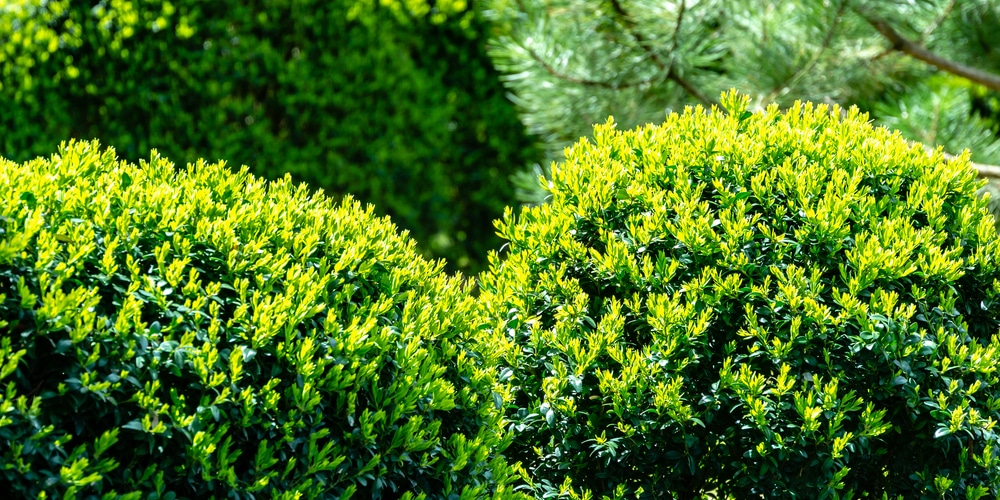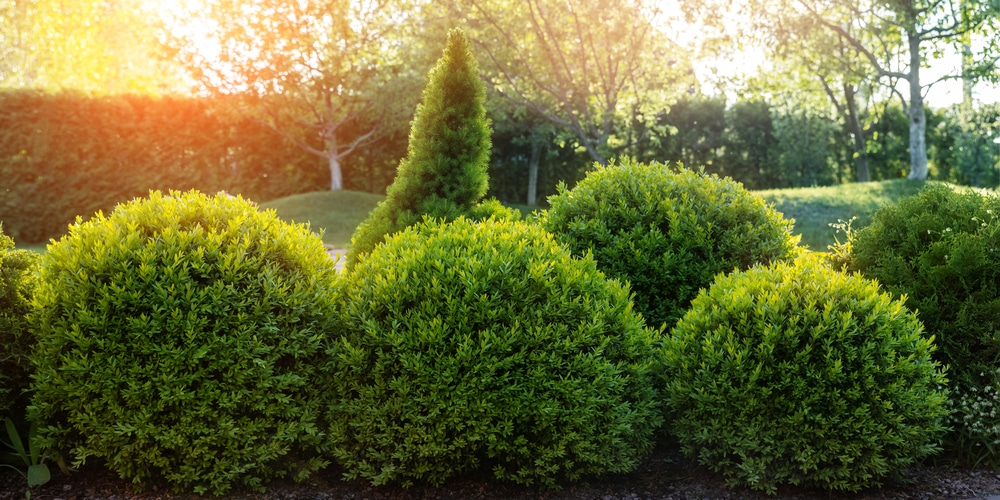Looking for a way to add some unconventional structural touches to your garden? Maybe you’re looking for more privacy, or a way to splash up a problematic corner of your yard.
Evergreen shrugs may be the answer to your problems. You can do an evergreen shrubs Zone 7 garden in any number of ways, and theyr’e a very underrated addition, to the point where many experienced gardeners aren’t aware of the versatility they offer.
So let’s dig into all that a little. Evergreen shrubs bring a lot to the table, but it’s important to know about the Zone 7 issues that may come up. We’ll start by mentioning those along with some of the varieties, then move on to the attractive possibilities evergreen shrubs offer.
Evergreen Shrub Varieties

If you’re looking for variety, you won’t be displeased with whatever evergreen shrub list you put together.
The list includes Wintercreeper, Boxwood, Oregon grape holly, Mountain Laurel and many others, but it’s important to check your specific Zone 7 conditions to make sure you’ve got a specific climate match.
Also, be aware that evergreen shrubs tend to go wide as they grow, so make sure you give them plenty of room so they don’t obstruct your walkways or sidewalks. The general rule is that the space you allow should be about half the width of the specific shrub you’re going to plant.
Drainage is important, too. Some evergreen shrubs can deal with damp conditions, but most like soil with good drainage, and they tend not to like wet, soggy ground on a consistent basis.
You should definitely use mulch to help them along. Go with pine needles or bark chips; the benefit is that they’ll keep the roots cool and moist in the summer, and they’ll help prevent damage from freezing and thawing in the winter. As an added benefit, the mulch will also help keep weeds in check around them.
Design Possibilities
This is the fun part. We’ll start with the possibility that you live in an area with small house lots; if that’s the case, evergreen shrubs can be the answer to your prayers if you’re considering adding a hedge. They’re tall, dense and thick, and they provide a sense of solitude with a natural touch of woodsy greenery.
There are some caveats, though. Know the municipal regulations when it comes to adding a hedge, and plan the spacing carefully. Make sure you get the right level of plant density when you make your choice, and you should always purchase replacement plants just in case struggles emerge with parts of your hedge. somewhere in your yard.
Landscaping
Landscaping is another possibility when it comes to using evergreen shrubs. If you have a corner of your yard that’s dark and dreary, you can add in some evergreen shrubs to spruce things up, both literally and figuratively.
You need to do this carefully and properly, though. Make sure to take into account how much shade you have in that particular corner, and choose your evergreen shrubs accordingly.
Address all soil and drainage issues beforehand, and consider the path you want visitors to follow if your yard gets a lot of that kind of usage. Consider how much shade you have in the space and choose your evergreen shrub accordingly.
Boarders
Now let’s talk about border enhancement. It’s another way to use evergreen shrubs to add structure to your yard, and they offer a great contrast to brighter blooms if you already have an established garden.
When you do this, make sure you follow the repetition rules. Plant your evergreen shrubs in odd numbers—think groups of 3, 5, 7, etc.—and cluster them if at all possible. Single shrubs can be used as a centerpiece, but otherwise you should go with the numbers.
As you count out the numbers, ask yourself some basic questions. Are you looking for contrast? More depth? Height in the back of the planting area, or low cover in front? Answering these questions will help you map out a plan for your evergreen shrubs, and this will help you to avoid mistakes along the way.
Evergreen Shrubs Zone 7: Conclusion
Finally, consider the shapes evergreen shrubs can add to your yard or garden. They can be round, pyramid-shaped or be used to create a column structure. Some have a wild, untamed appeal, while others can be sheared into compelling shapes. You can even get into topiary possibilities, which is a whole new world for many gardeners.
Regardless of what you’re after, evergreen shrubs represent a great way to go. They may require a little extra effort to get from start to finish, but if you do a little homework and a reasonable amount of planning, the ends will more than justify the means.
Related Article: Best Evergreen for Shaded Area
